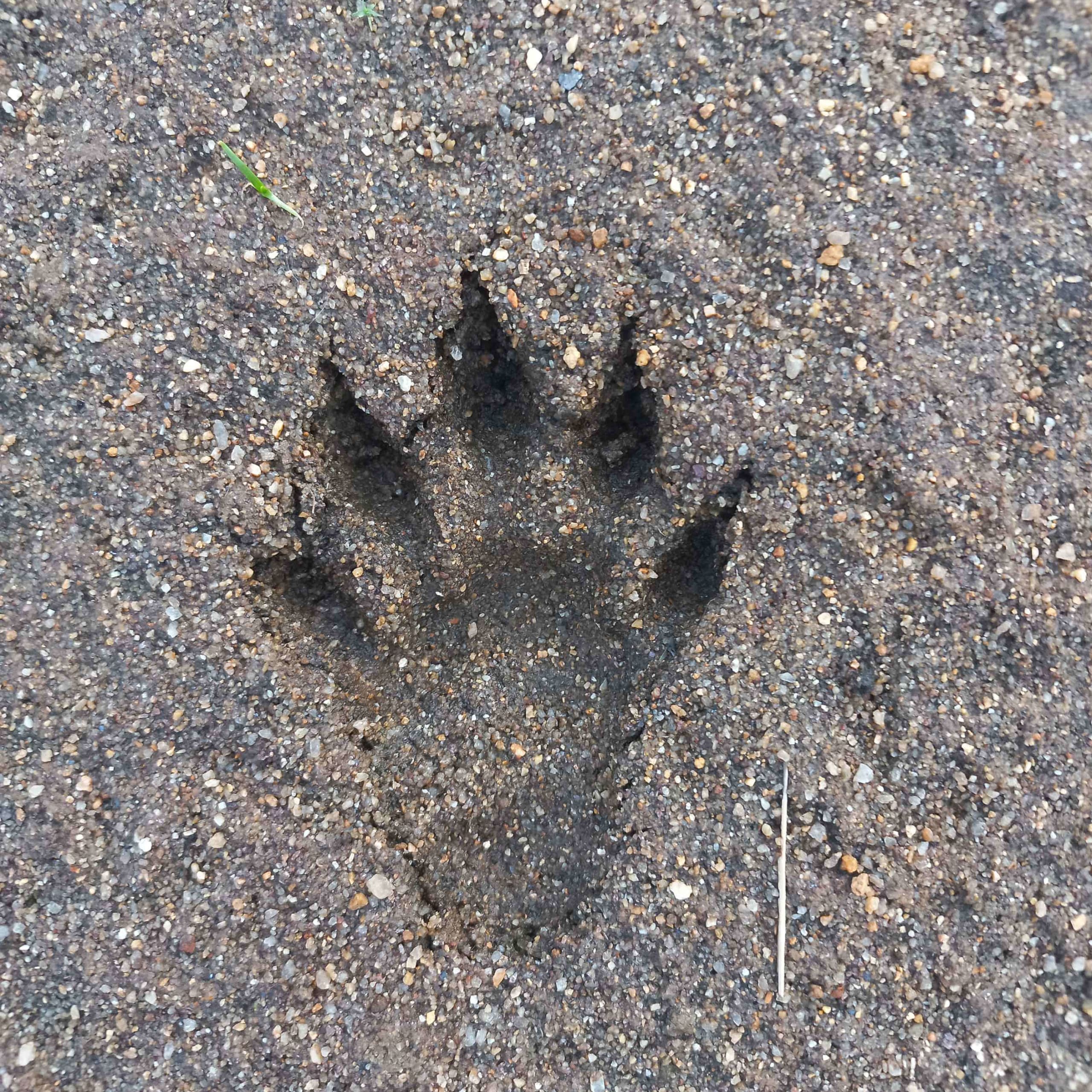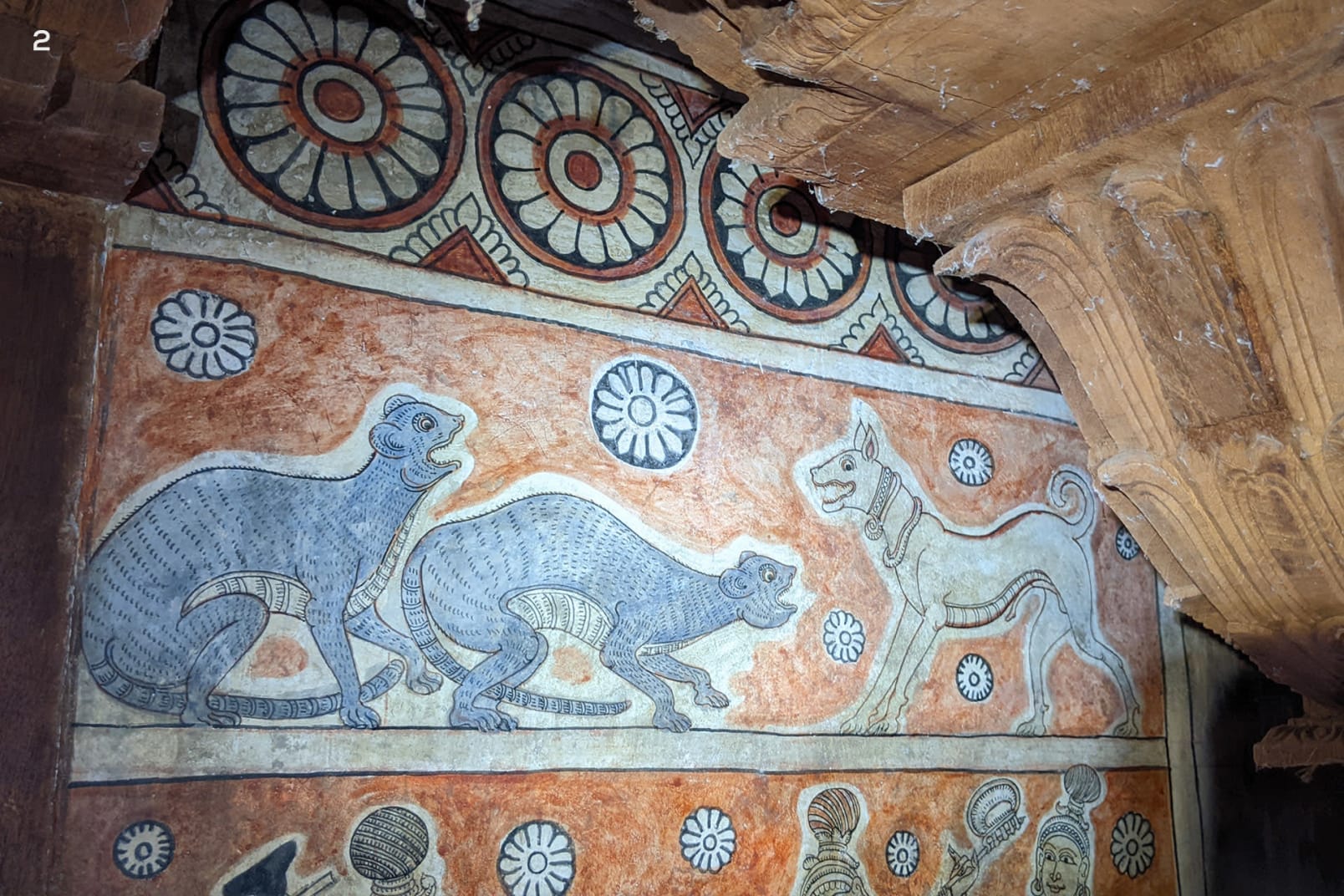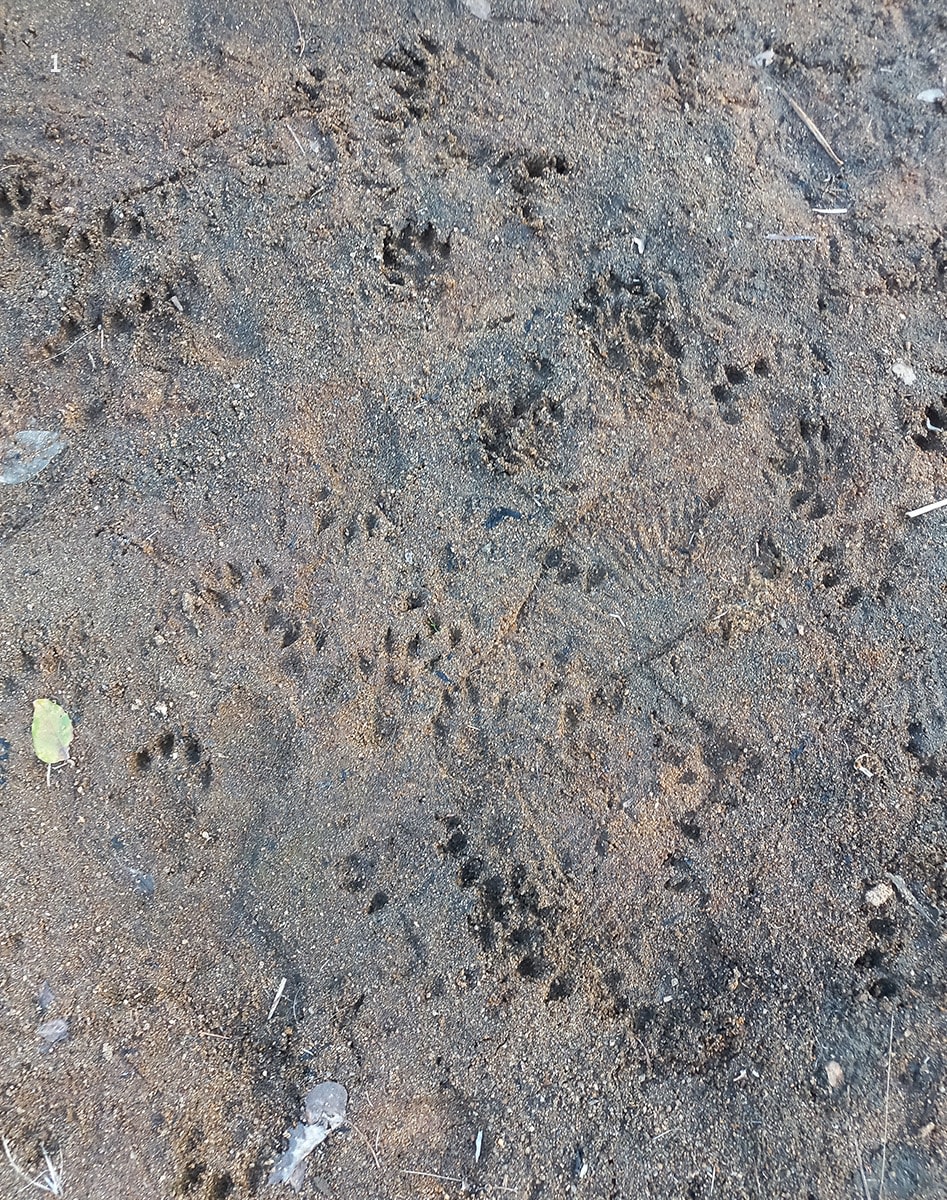 Listen to this article
•
15:34 min
Listen to this article
•
15:34 min
The evening sun shines above the Tamiraparani River, bearing down on a group of people in a coracle. One of them hugs a fallen tree trunk wedged in the shallows to prevent the coracle from floating away, while two others tie a motion-sensing camera trap to the trunk, ensuring it covers the water and opposite bank. The coracle sways wildly as they coordinate their antics, eventually securing the camera to satisfaction. This chaos, as ridiculous as it may seem to onlookers, is for no frivolous venture. Rather, it is part of an otter occupancy survey that feeds into a larger restoration project along the Tamiraparani River and is led by ATREE’s Agasthyamalai Community-based Conservation Centre (ACCC).
The Tamiraparani begins its journey high up in the Pothigai Hills of the southern Western Ghats in Tamil Nadu, its origin lying in the collation of numerous little hill streams. It flows down the leeward side of the range, through the Kalakkad-Mundanthurai Tiger Reserve (KMTR), to reach the plains outside the reserve past the town of Papanasam. Traversing over 120 km from west to east, this perennial river threads a diverse range of landscapes, from moist evergreen forests to scrublands, agricultural fields and mangroves, with several rural and urban settlements peppered in between.
(1) The Tamiraparani River starts in the Western Ghats. Its river basin, which spans roughly 5,700 sq km, is the lifeline for people and other life forms in Tamil Nadu’s Tirunelveli and Thoothukudi districts. (2) The conflict between otters and free-ranging dogs, depicted in this centuries-old painting in a 1,200-year-old temple in Thiruppudaimaruthur, continues to be one of the major threats to otters in India today. Photos: Smriti Mahesh (1), Thanigaivel A. from ACCC (2)
Cover photo: With creatures as secretive as otters, signs of their presence come in the form of tracks and poop. Smooth-coated otters leave distinct prints with five clawed digits and a narrow central pad, while their poop is characterised by a strong fishy odour. Photo: Smriti Mahesh
Elusive creatures
Otters exist along the Tamiraparani in the hills inside the reserve; a study inside KMTR recorded two of the three species found in India — smooth-coated and Eurasian otters. Smooth-coated otters, the most widespread and well-documented of the lot, are highly social creatures that form large groups with their pups. They communicate through chirping calls and communal spraint (poop) sites around which activities like basking and grooming are centred. One might think that an animal that moves about in such numbers would be easy to find, but as we learnt with each uneventful night watch and days of otter-less camera trap footage, this belief is laughably false. Otters are endowed with incredible stealth, capable of ducking in and out of the water with easy silence. They also dig their dens in sandy banks shrouded in dense riparian vegetation. Such elusive behaviour allows them to swim under the radar, giving us little confirmed evidence of their presence outside the reserve.
As we follow the Tamiraparani down from Papanasam, we reach the village of Thiruppudaimaruthur in the plains. On the banks of the river is a 1,200-year-old Shiva temple with wall paintings dating from the late 17th century onwards. Some paintings display possibly the earliest evidence of otters along the Tamiraparani — a portrayal of two otters in conflict with a free-ranging dog. Since then, evidence of otter presence has been mainly anecdotal, gathered through conversations with locals who claim to have seen the “neer naai” (otter in Tamil). They report having encountered the otters at twilight or early in the morning, describing them as wary creatures; “As soon as I saw it, it vanished into the water” was a common thread across conversations. Such descriptions match what we know of otter behaviour, extending hope that they have managed to survive here despite the major changes the Tamiraparani has undergone over the years.
The Search
With no physical evidence of our own, however, the situation seemed rather bleak until we stumbled upon crystal clear tracks near the village of Aladiyur. A flurry of fresh prints with five digits (toe prints), signs of webbing between the toes, and an elongated central pad marked a long stretch of damp riverside mud. The river here flows deep and slow, banked by swathes of sand and thick vegetation — an ideal space for them to carry out their daily routine in secrecy. While footage of the secretive neer naai continues to elude the team, such conclusive signs drive them to continue the search. They scout different sections of the river for suitable otter habitats and sit up late into the night on the riverbank, hoping for a glimpse and, perhaps, an incriminating photograph.
This painstaking search for otters in this landscape finds its basis in recognising these creatures as apex predators in riverine ecosystems. The main threats to their existence occur in the form of conflict with either humans or free-ranging dogs. So, their presence (or lack thereof) is considered an indicator of the health of the rivers they inhabit, and with the decline of the Tamiraparani, they might be the key to the river’s sustenance.

Human dependence and its consequent impact on the river have risen drastically over time, subjecting it to extensive channelisation, sewage, industrial effluents, and agricultural run-off. A section of the river at Papanasam is clogged with discarded clothes — remnants of a religious practice that began about 12 years ago. Measures have been taken to prevent clothes from being thrown directly into the river, but the damage runs deep. Layers of cloth form the river bed (catching your ankles as you wade through), and more hang in the floodplain vegetation strewn with last monsoon’s tattered remains. Besides this, unethical fishing practices such as using bleach or explosives have been reported, and this river, like many other freshwater systems in India, battles an all-pervasive catfish invasion.
The Tamiraparani River has been making its way across the hills and plains of Tamil Nadu for millennia, and this shifting landscape has played host to an incredibly vast range of life forms. Mapping the presence of otters here could help establish it as a flagship species along the river. Other aspects of the ecosystem — vegetation, fish, water, and the communities dependent on the river — could then be woven together around this elusive animal to give us a holistic view of the river and its health outside the confines of the protected area. But beyond the various scientific reasons behind the search for otters is the sheer delight that comes from knowing that these fascinating creatures live in quiet coexistence amidst the umpteen villages lining the riverbanks.









